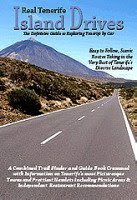 An important piece of information which everyone should know when thinking about visiting Tenerife is that there are actually two Tenerifes.
An important piece of information which everyone should know when thinking about visiting Tenerife is that there are actually two Tenerifes.It’s a subject which I bring up time and time again mainly because:
a) I feel strongly about it and
b) a lot of potential visitors aren’t aware of this fact – actually some residents aren’t aware of it.
Tenerife No1 is the Tenerife that most English speaking people know about and is the one that was built specifically to meet the needs of the growing tourist industry back in the 70s and which has evolved into a popular relocation destination for ex-pats. Tenerife No2 is basically everywhere else outside of that and is the Tenerife where most Canarios live.
Tenerife No1 attracts millions of visitors a year because it supplies exactly what many people are looking for when they book a holiday, but its image is such other potential visitors wouldn’t go near it with a barge pole. This is partly down to outdated TV programmes, but also partly down to the fact that resorts like Playa de las Américas don’t tick the boxes of people who want to experience a different culture as much as warm rays on their sun deprived skin. These are the people we are aiming to convince, through our website, blogs and guidebooks such as ‘Going Native in Tenerife’ and ‘Real Tenerife Island Drives’ that there's much more to Tenerife than they might think.
To illustrate what I’m talking about let me tell you about a couple of recent examples:
The first involved a woman who was planning to visit Tenerife. Instead of opting for the resorts she had chosen to spend a few days in a hill town in the south followed by a few days in the north of the island. She was hoping that she and her son would be able to practice their Spanish whilst they were on the island. However, a work colleague whose parents actually lived in Tenerife No1 told her that they wouldn’t get much practice speaking Spanish on Tenerife as everyone spoke English.
It was nonsense advice and we reassured the woman that the opposite was true. Outside of the tourist resorts English is hardly spoken at all. Sure enough within a couple of days she was back asking for help with a translation of an email she’d received from the rural hotel she was trying to book. Not only was the email in Spanish, it was almost incomprehensible Spanish as it wasn’t even grammatically correct. It was written exactly the way some locals speak here – with some key consonants being left out.
This was her introduction to Tenerife No2 and the parents of the person who had given the initial advice clearly didn’t even know it existed even though they lived in Tenerife.
The second example involves Carnaval. Throughout February it is the biggest thing happening on Tenerife No2. Carnaval in Santa Cruz and Puerto de la Cruz takes place at the same time and businesses more or less grind to a
 halt during this time as workers succumb to the exhilarating, but exhausting beast. It’s a survival test, albeit a fun one and, if you live in the north of Tenerife, almost impossible to ignore.
halt during this time as workers succumb to the exhilarating, but exhausting beast. It’s a survival test, albeit a fun one and, if you live in the north of Tenerife, almost impossible to ignore.I mention it because I’m a member of the community website, ‘Tenerife Forum’. Forums like this and the similarly named ‘The Tenerife Forum’ are incredibly useful resources for people visiting, or moving to Tenerife, especially in relation to the south and are a good place for people to make friends. However during carnaval week, although there were hundreds of postings on the forum, I could have counted the ones which made any reference to carnaval on the fingers of one hand. In fact I could have counted them on the fingers of the hand of my old physics teacher who had lost a couple of digits due to some of his experiments going seriously wrong.
So my point is that millions of people already know and love (or loathe) Tenerife No1 one, but much of Tenerife No2, precisely because it remains firmly Canarian in culture, is still relatively ignored.
And that’s Tenerife. You can have your modern resorts, but equally well you can have quaint villages and historic towns. You can stay in places where the food and the language is familiar, or you can immerse yourself in a culture which has hardly changed in centuries and you have to ask waiters in restaurants what exactly they’ve placed in front of you (in Spanish).
Ultimately, between them the two Tenerifes can provide something to suit the needs of just about anyone…providing they’ve got the right guidebook of course.




No comments:
Post a Comment